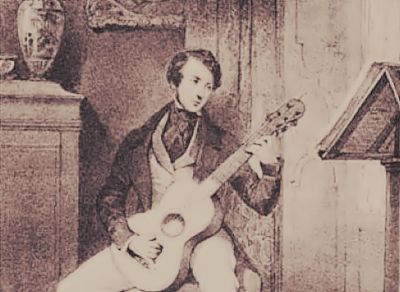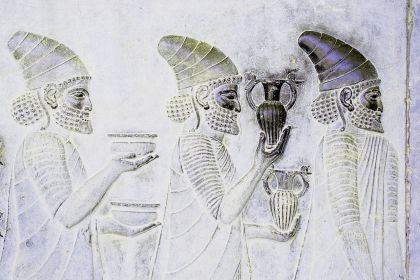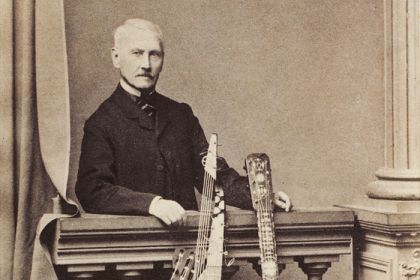Classical Guitar
Matteo Carcassi's guitar etudes of early Romanticism are still relevant for teaching classical guitar

Matteo Carcassi
Matteo Carcassi was an Italian guitar composer whose creative period coincided with the expansion of classical music across the European continent, marking the beginning of the Romantic era. In those years, music that was far from complex held the public's attention as many people used simple etudes to learn musical instruments in order to participate in amateur ensembles.
Like many guitarists of Romanticism, Matteo Carcassi sought to publish his set of etudes which he released together with his guitar method, but it's the etudes in particular that have grown in esteem and are now revered by modern classical guitarists for its blend of technical skills and enchanting romantic harmonies.
In 1836, Matteo Carcassi published his three-volume Methode complete containing "profound knowledge of all the resources of this instrument" and supplementing the edition with 80 self-composed pieces. Following this, the composer released his glorious 25 Studies—a set of etudes for the classical guitar which serves as a bridge between the elementary and advanced stages of the discipline.
Listen to Matteo Carcassi's Etude No. 22 op. 60 Allegretto performed by Lucio Matarazzo:
Many of Matteo Carcassi's works feature his guitar interpretations of famous operatic pieces which, together with arrangements of popular songs, diversified his repertoire during concert tours in Germany, England, and France. For modern guitarists, the most interesting Matteo Carcassi work is probably his 6 caprices which showcase emotion and skill but are not as complex as guitar caprices of Luigi Legnani imbued with famous Paganini's works.
Listen to Matteo Carcassi's Caprice No. 4 op. 26 Allegro performed by Lucio Matarazzo:
It is believed that Matteo Carcassi completed his concert activity in the 1840s, apparently due to the widespread declining interest to guitar music against the rapidly growing popularity of the piano which became a symbol of Romanticism itself.




Why is the title of this article phrased as if it's trying to make some kind of controversial point? Why is Carcassi's relevance even being debated? His method and etudes are an indispensable part of classical guitar pedagogy and Carcassi imitators like Sagreras don't come close, IMHO. That being said, Sagreras and others like him have many useful things for students and I believe that any instructor who relies on just one method or approach is doing a serious disservice to their students, betraying a real lack of awareness of pedagogical resources for the classical guitar. Either way, the Carcassi bashing is and always will be baffling to me.
I use his studies with all of my students regardless of the genre they study with me. I even transcribed some for my ukulele students and everyone seems to enjoy them. I come from a rock and jazz background but I mostly play classical now. Carcassi was one who really helped me get into this world of music. Why does he get bashed?
Josef Kuffner method also made the impossible,to become Possible
Who was that guy!?! That tone! Those Dynamics and range of timbre controls...!
fantastic stuff
Les 25 études sont mon échauffement favori.
Souplesse et aisance garantie après la 25e